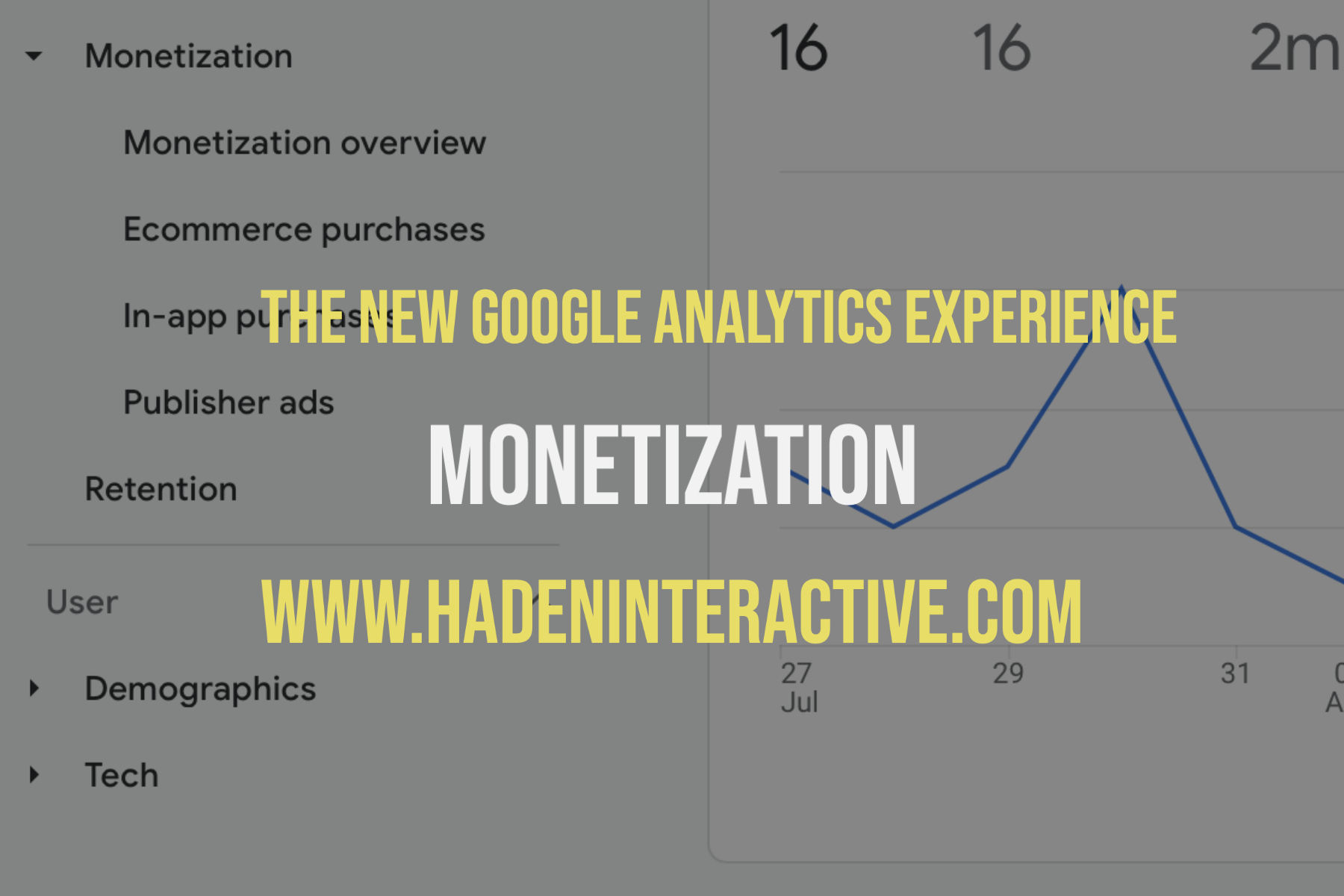The new Google Analytics Monetization report is a completely new report; Universal Analytics didn’t show all this information unless you customized your dashboard to show it. Even then, it didn’t show it in one place.
The new Monetization report lets you see at a glance where your revenue is coming from, whether you’re tracking ecommerce or ads. You can compare the performance of specific ads and products easily.
Our lab site is admittedly not a good example here, but we set it up to capture the information for the sake of this blog post. You’ll be seeing small amounts of data, but it should still be clear. One important takeaway is the reminder that your analytics won’t capture information it hasn’t been set up to capture. Since we didn’t set this site up for e-commerce in Universal Analytics, it doesn’t show that data. And since we just set it up to capture ad revenue yesterday, it shows just one day of revenue.
If you have either of these types of revenue at your website, you should go ahead and set up the appropriate events in GA4 so you will have the data going forward. If you do, then you will see something like the screenshot below.

By default, the Monetization Overview summarizes all these things:
| Ecommerce purchases by Item list name | the number of purchase events by the item_list_name parameter |
| Ecommerce purchases by Item name | the number of purchase events by the item_name parameter |
| Ecommerce revenue by Order coupon | the amount of revenue from purchase events by the coupon parameter |
| Item views by Item promotion name | the number of view_item events by the name of the promotion |
| Product revenue by Product ID | the total revenue by the product identifier for a feature or subscription that users can purchase within your mobile app |
| Publisher ad impressions by Ad unit | the number of ad_impression events by ad unit |
E-commerce report
The ecommerce report shows events involving products. It shows a lot of useful information by default:

You’ll see the number of each item purchased as well as the number added to the shopping cart. You’ll also see the conversion rate for people who viewed the product. That is, if 10 people looked at a particular item, how many actually bought it? This information allows you not only to see what you actually sold, but also shows some steps toward purchase: examining an item and putting it into the cart.
This information allows you to get better insights into people’s inclinations and behaviors than sales alone.
In-app purchases
One of the big differences between G4 and the classic Google Analytics is that you can combine a website and an app. This means that you can track in-app purchases along with purchases at your website in the new Monetization report.
This report gives you sales for each item and the revenue, including average revenue for items with varying possible costs.
Publisher ads
If you monetize with ads, this report will give you impressions, length of time the ad was shown, clicks, and revenue.

In our example we can see one day’s worth of activity: 560 impressions and 3 clicks. We have a couple of ad spaces on our lab site, both served by Google ads. If you have, for example, banner ads which you sell to advertisers directly, you will have to set up separate events for each one in GA4.
We also have affiliate links. We can see the clicks on these links in the Conversions section of the Engagement Report. This is also a means of monetizing a website, but GA4 doesn’t have access to the revenue data. If we calculate the average revenue per click for our affiliate account over the past year and estimate the revenue for each click based on this number, we can assign a dollar value to each click and estimate our revenue in this way.
Get some help
If you are primarily a website owner for your business or professional services, you will probably need to get some help setting up the data collection for your Monetization reports. If you monetize your website through ecommerce or ads, it’s probably worth your while to get that help.
More on the new GA4 experience:


Leave a Reply